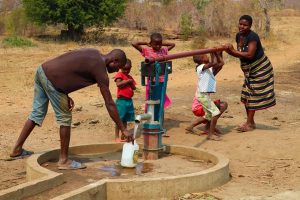Dr. Diana Atwine, the permanent secretary to the Ministry of Health, suggested on February 7, 2024, that the ministry drill bore holes within the hospital premises located upcountry to supplement the National Water and Sewerage Cooperation (NWSC).
Atwine’s reasoning comes from the fact that the ministry has accumulated water bills in the billions of shillings from hospitals across the country.
Atwine says water challenges are real, and the only way to solve this problem is by digging boreholes to run these facilities, since NWSC has threatened to disconnect water supply to the hospitals due to unpaid bills, especially Mulago referral hospital with a bill amounting to Ugx. 3,730 billion, Jinja Regional referral hospital with 3,656 billion, specialised women hospital with 2,101 billion, and Naguru hospital with 1.480 billion.
According to NSWC, it fulfilled its mandate of supplying water and sewerage services to hospitals, but unfortunately, the Ministry has failed to meet its obligations by paying what they owe to NWSC.
The suggestion by MOH to drill boreholes in upcountry hospitals has met resistance from NWSC officials who have strongly advised MOH against taking the route, as it will be a disaster in the long run, with many hygienic outbreaks associated with poor hygiene.
This leads me to question how sustainable boreholes can be in maintaining a hospital with large populations—how long would one have to wait in line for said water, and also how would a patient master the energy to pump that water at the borehole?
People will definitely be forced to go without using water in various required areas due to the long hours one waits in line and the patients not being able to pump that water and carry it to the wards, laundry rooms, and bathrooms. There will be sewage blocks too, as insufficient water will lead most of the flash toilets to either block or overflow.
Previous surveys, in fact, suggest boreholes intended to solve a problem will actually cause more serious problems within the shortest time possible.
A survey carried out by Morgan Adams from the University of San Francisco on the impact of borehole wells on hygiene and sanitation in a case study in rural south-west Uganda in 2015 established that diarrheal diseases are the second leading cause of death for children under the age of five due to poor hygiene caused by a lack of clean water supply.
According to WHO (2013), about 2,089 children die a day as a result of poor sanitation and access to clean water, calling for improvement of clean water body supplies, which pushed NWSC to extend their water supply to rural areas, an indication that boreholes had failed in the sustainability of providing clean water and constant supply.
The possibility of cholera outbreaks at the various hospitals where these boreholes will be constructed cannot be ignored.
Research also shows that drinking water from some boreholes has become a death trap with waterborne diseases such as cancer, buruli ulcer amongst others due to cement residues contaminating the water.
For the permanent secretary of the Ministry of Health to suggest the construction of boreholes to curb water scarcity or high water bills as much as it can be looked at as a solution is a danger and a health disaster waiting to happen.
Therefore, due to a vast lack of sustainability, I recommend that the Ministry of Health convene a roundtable discussion and devise policies aimed at clearing NWSC’s bills, as it is the lesser of two evils, is less time-consuming, is more dependable, and is also less likely to cause a pandemic, which will lead to the deaths of many patients.

